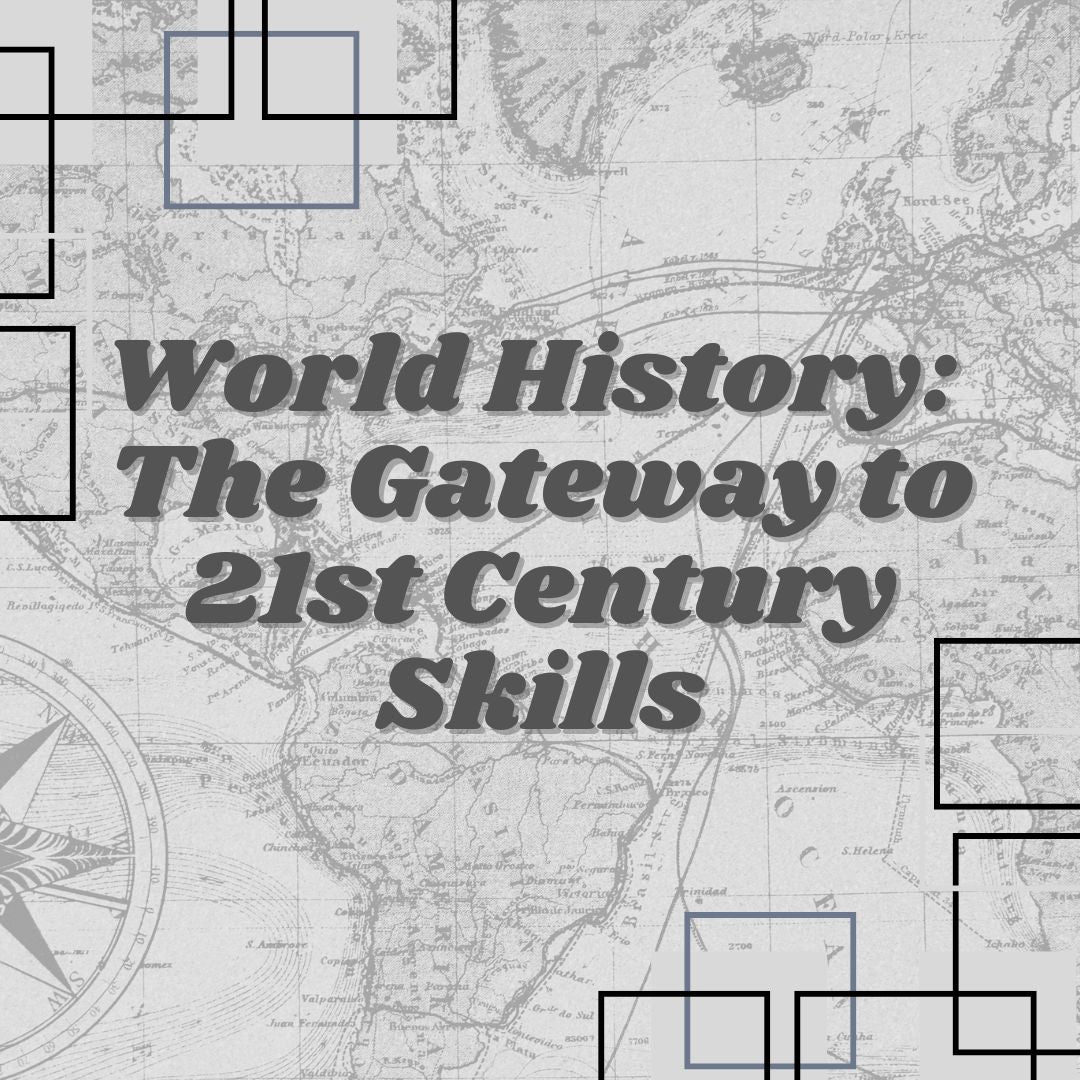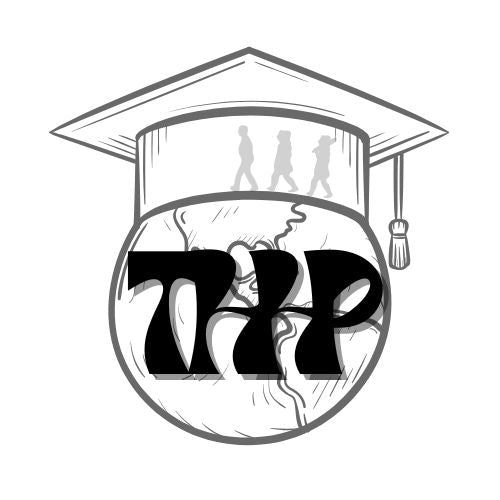
Developing Critical Thinking and Collaboration with History
Share
In today’s rapidly changing world, equipping students with 21st-century skills is more critical than ever. These skills—such as critical thinking, problem-solving, collaboration, communication, and digital literacy—are necessary not only for academic success but for thriving in an increasingly complex global society. As educators, we must find ways to integrate these competencies into our teaching. World history, with its rich narratives and global perspectives, offers an ideal platform for fostering these skills.
What Are 21st Century Skills?
The term “21st-century skills” refers to a broad set of competencies required for success in an interconnected, technology-driven world. These include:
1. Critical Thinking and Problem Solving: The ability to analyze, evaluate, and synthesize information to solve complex problems.
2. Collaboration and Communication: Working effectively with others, often across diverse cultural contexts, and articulating ideas clearly.
3. Creativity and Innovation: Thinking outside the box and developing novel solutions or approaches.
4. Digital Literacy: Navigating and utilizing technology effectively and responsibly.
5. Global Awareness: Understanding global issues, cultures, and histories.
These skills are essential for future success in both professional and personal contexts. As such, fostering these skills should be a core objective of modern education.
Why World History is an Ideal Subject for Skill-Building
World history, with its cross-cultural narratives, diverse perspectives, and rich content, provides an excellent opportunity to integrate 21st-century skills in meaningful ways. Here are several reasons why world history stands out as an ideal subject for building these critical skills:
1. Critical Thinking and Analytical Skills
History, by its very nature, is about the interpretation of complex events, ideas, and trends. Analyzing historical events requires students to engage in critical thinking—questioning the causes and consequences of events, evaluating primary sources, and weighing different perspectives. World history challenges students to think deeply about how past events shaped the present and to apply those lessons to contemporary issues.
Research shows that critical thinking improves when students engage in discussions that require them to defend their positions, challenge assumptions, and consider alternative viewpoints (Facione, 2015). By studying diverse historical perspectives—from ancient civilizations to modern global movements—students develop the ability to assess information and make well-reasoned arguments.
2. Collaboration and Communication
History is not only about individual inquiry but also about collective understanding. In the classroom, students often work together to analyze sources, debate interpretations, and synthesize information into cohesive arguments. These collaborative activities are essential for building communication and teamwork skills.
Educational psychology underscores the importance of cooperative learning in developing both cognitive and social skills. Studies have shown that students who engage in group discussions and collaborative projects show improved communication skills, greater academic achievement, and a deeper understanding of content (Johnson, Johnson, & Holubec, 1998). By working together to examine historical events, students learn to communicate their ideas effectively and respect the viewpoints of others, which is vital for success in the modern, interconnected world.
3. Global Awareness and Cultural Competency
One of the greatest advantages of studying world history is the emphasis on global interconnectedness and cultural diversity. The subject naturally lends itself to discussions about different societies, cultures, and worldviews, which are crucial for fostering global awareness. In a world where globalization is a driving force, students must understand how historical events have shaped the geopolitical landscape, economics, and cultural interactions.
Global competency is a key 21st-century skill. According to the Asia Society, global competence includes the ability to investigate the world, recognize perspectives, communicate ideas, and take action (Asia Society, 2014). World history enables students to grasp the complexities of global issues such as trade, diplomacy, migration, and war—preparing them to engage with the world in informed, thoughtful ways.
4. Creativity and Problem-Solving
History offers ample opportunities for creative problem-solving, as students are often asked to consider how different historical actors might have responded to challenges or what might have happened if key events had unfolded differently. These exercises in historical inquiry foster creativity and the ability to think beyond conventional solutions.
Incorporating case studies into world history allows students to engage in historical problem-solving, considering how different countries and cultures solved pressing problems such as conflict resolution, economic crises, or environmental challenges. These activities encourage students to develop innovative solutions to contemporary issues by learning from past successes and failures (Wagner, 2014).
5. Digital Literacy
The digital age has transformed the way history is studied and communicated. The wealth of digital resources available—from primary source archives to multimedia content—offers students unique opportunities to enhance their digital literacy. In world history classrooms, students can access databases, engage with online discussions, and create digital projects that showcase their understanding.
Digital literacy is no longer optional; it is an essential skill for academic and professional success. According to the National Education Technology Plan, integrating technology into history education helps students build the skills they need to succeed in a digitally connected world (U.S. Department of Education, 2017).
Evidence-Based Best Practices
Several evidence-based strategies can help educators incorporate 21st-century skills into the study of world history:
1. Project-Based Learning (PBL): This approach allows students to engage with real-world problems and produce tangible outcomes. In history, students can work on projects such as historical documentaries, interactive timelines, or simulations of historical events, which require critical thinking, collaboration, and creativity.
2. Inquiry-Based Learning: Encouraging students to ask questions and explore topics independently fosters curiosity and self-directed learning. This approach helps students develop problem-solving skills and deepen their understanding of history (Grant & Calegari, 2007).
3. Flipped Classrooms: By using digital resources for content delivery outside of class, educators can create more interactive, discussion-based activities in the classroom. This promotes collaboration, communication, and deeper engagement with historical content (Bergmann & Sams, 2012).
Incorporating 21st-century skills into the history curriculum is not only possible but essential. World history, with its global scope and rich content, offers an ideal setting for developing critical thinking, collaboration, communication, creativity, and global awareness. By using evidence-based teaching strategies, educators can ensure that students acquire the skills they need to succeed in the modern world while gaining a deeper understanding of the forces that have shaped human history.
As you work to integrate 21st-century skills into your classroom, it's essential to have the right resources at your disposal. The Human History Project offers a comprehensive, evidence-based approach to teaching world history that aligns with the best practices outlined in this article. With its focus on critical thinking, collaboration, and global awareness, our resources provide a perfect foundation for fostering essential skills in your students.
Equip your students with the tools they need to succeed in the modern world—explore The Human History Project today and bring these proven strategies to life in your classroom.
